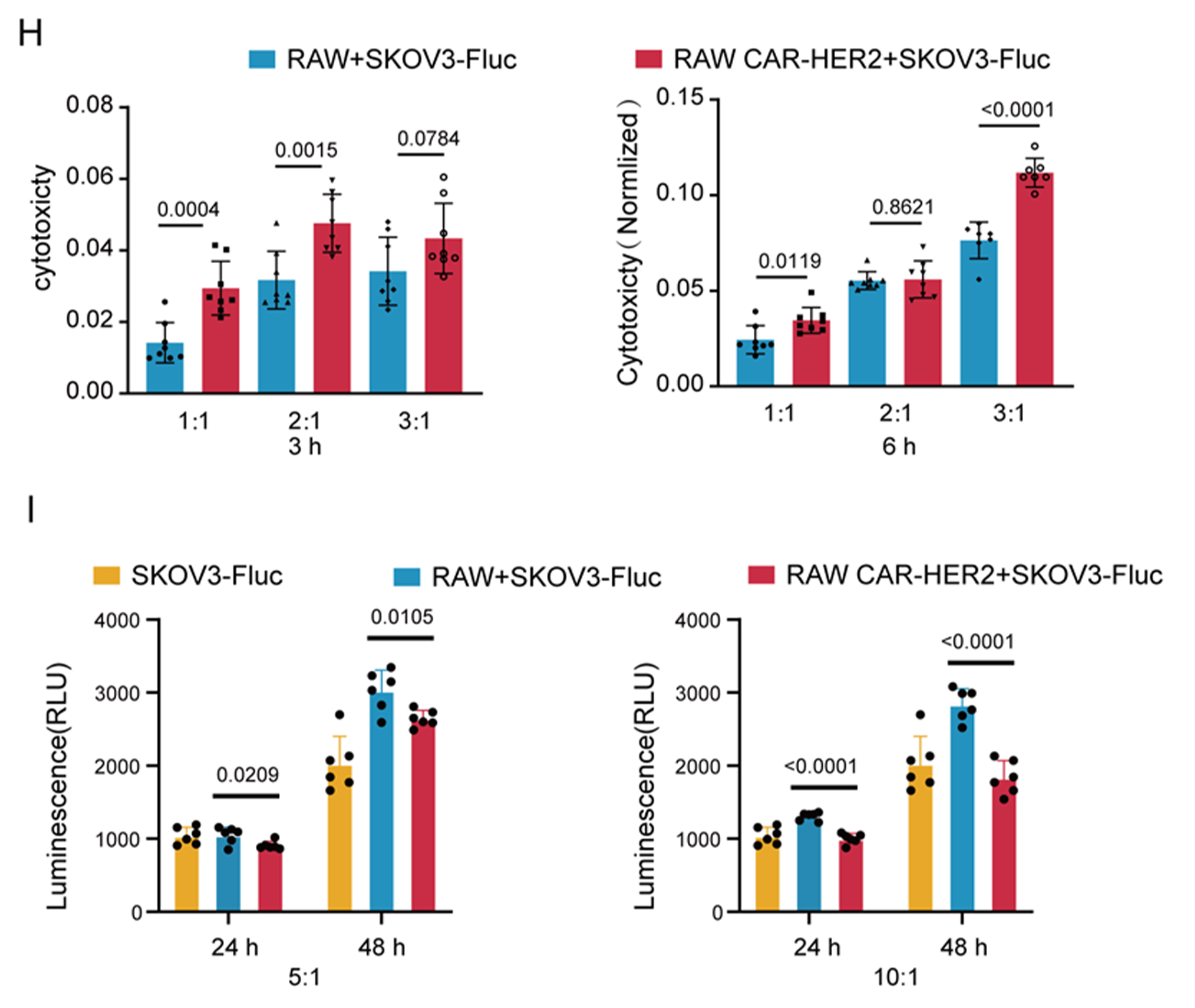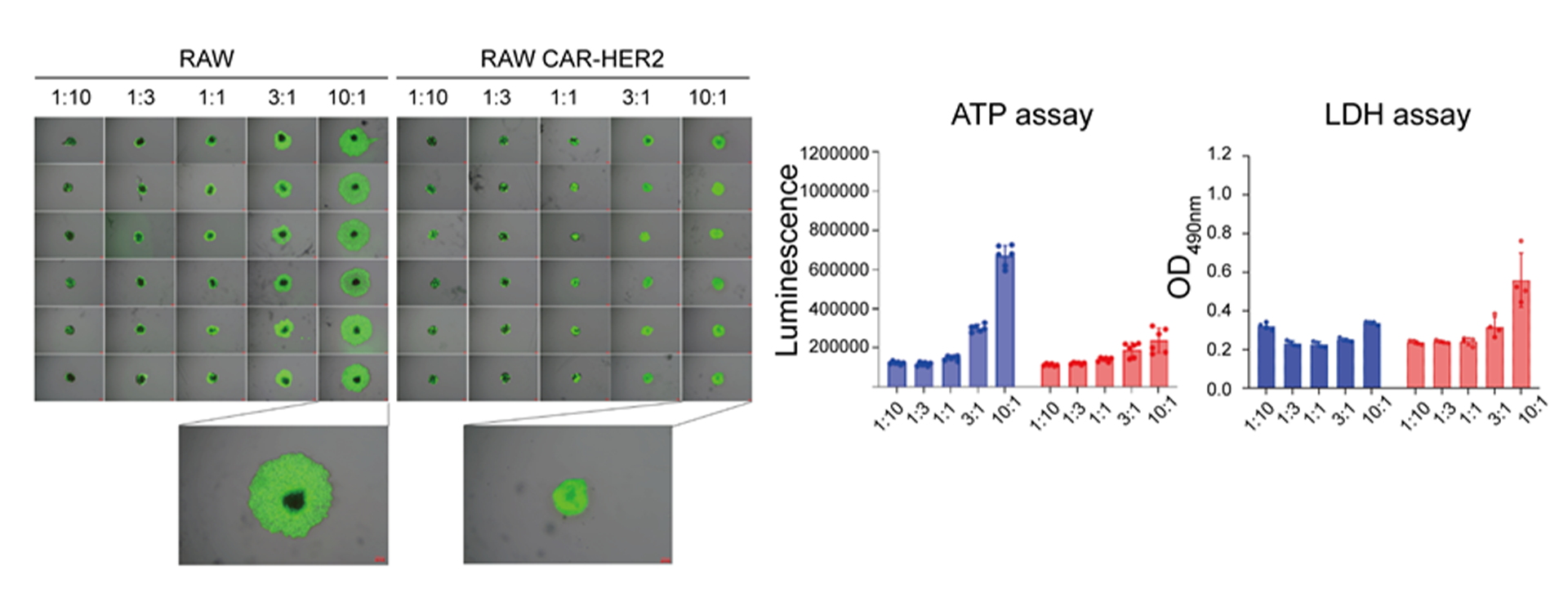0512-67998889(Suzhou)
18051093220(Shenzhen)
Recently, the strategic cooperation results of "RocRock Biology" and "Puheng Technology" "DNA orgami assembled spheroid for evaluating cytotoxicity and infiltration of chimeric antigen receptor macrophage (CAR-M), uploaded to the life sciences preprint platform "bioRxiv", its link https://www.biorxiv.org/content/10.1101/2023.12.03.569750v1
In this study, a 3D NCS-Origami assembled microtumor sphere model was introduced to evaluate the targeted recruitment, killing and infiltration ability of CAR-M, aiming to provide an effective high-throughput validation platform for new target screening and pharmacodynamic evaluation of CAR-M.

introduce
Definition of CAR-M
Over the past few years, CAR-T cell therapy has made significant strides in treating patients with blood cancers, earning FDA approval and ushering in a new age of cellular medicine. Despite this progress, it has encountered challenges in combating solid tumors, including poor penetration and the heterogeneity within tumor microenvironments. These hurdles have paved the way for CAR-M as a promising alternative. The primary strength of CAR-M is its ability to infiltrate immune cells and deliver potent tumor-killing effects, which is particularly beneficial in addressing solid tumors.
CAR-M is defined by its use of specific CARs—a synthetic transmembrane receptor—to equip macrophages with the ability to target tumor antigens in solid tumors more effectively, leveraging their phagocytic and cytotoxic capabilities. Beyond this, CAR-M also enhances antigen presentation and T cell cytotoxicity, while also modifying the phenotype of tumor-associated macrophages within the tumor microenvironment. These combined effects contribute to the effective elimination of solid tumors.
3D microtumor sphere model
Over the past few years, a novel 3D micro-tumor sphere model known as 3D NACs-origami assembled spheroid has emerged, leveraging biological nucleic acid materials and DNA origami techniques—collectively termed NAC-organ technology. This model enables swift self-assembly. In our study, we employed NAC-organ technology to engineer a 3D model of ovarian cancer that doesn't require a matrix gel for support and is suitable for extended cultivation. Data from PBMC infiltration experiments demonstrate the model's capability to mimic the dynamic interactions between cancer and immune cells, with immune cells capable of penetrating the tumor construct. This precise replication of the tumor's immune microenvironment provides a robust platform for studying cancer-cell immune-cell dynamics.
Results and discussion
Evaluation of CAR-M by two-dimensional co-culture model

(Figure 1)
Figure 1: Phagocytosis Efficiency Assessment The left panel depicts a fluorescence imaging-based evaluation of phagocytosis, where target cells SKOV3 are marked with the pHrodoSE dye. Upon 6 hours of co-culture with CAR-M, a substantial increase in phagocytic events is visibly observed under microscopic examination within the CAR-M group. The right panel illustrates a flow cytometry-based assessment of phagocytosis, with target cells SKOV3 stained using FarRed dye. Post 6 hours of co-culture with CAR-M, the phagocytic rate of CAR-M cells notably surpasses that of the control group.
(Figure 2)
Figure 2: Assessment of Cytotoxicity The cytotoxic potential of CAR-M is uniformly demonstrated through both the LDH assay (H) and the Firefly luciferase assay (I), showing significant cytotoxicity that changes with varying effector-to-target (E/T) ratios and time points. There is a trend of increased cytotoxicity with a higher E:T ratio.
In conclusion, the outcomes from the 2D co-culture model collectively illustrate the substantial phagocytic and cytotoxic functions of CAR-M.
PBMC interacts with 3D tumor microspheres to form tumor immune microenvironment

(Figure 3)
Figure 3: High-Throughput Co-culture Model of PBMCs with 3D Tumor Spheroids in 384-Well Plates Following the establishment of the 3D micro-tumor spheroids for 24 hours, mouse peripheral blood mononuclear cells (PBMCs), PBMCs supplemented with the immune cell inhibitor BLZ945, and PBMCs supplemented with the immune stimulant SEW2871 were introduced. Observations revealed that PBMCs actively infiltrate the 3D tumor spheroids.
Targeting, infiltration and killing of CAR-M in 3D tumor microsphere model
 (Figure 4)
(Figure 4)
Figure 4: Evaluation of CAR-M Cell Targeting and Infiltration in 3D Tumor Spheroids When GFP-tagged M/CAR-M cells were introduced into the 3D tumor spheroid model, 95% of the CAR-M cells were observed to have penetrated the spheroid after 48 hours, demonstrating a robust ability of CAR-M to target and infiltrate the 3D tumor spheroid model (SKOV3 spheroid). Subsequent assessments using ATP and LDH tests substantiated that CAR-M possesses enhanced cytotoxic effects on 3D tumor spheroids.
Sum up
In summary, we have established a three-dimensional tumor spheroid system based on NACs-origami assembly technology for the ex vivo evaluation of CAR-Ms. More importantly, this platform facilitates the validation of other targets for CAR-Ms and various types of tumors, as well as the assessment of combination therapies involving CAR-Ms. This accelerates clinical research on CAR-Ms and provides favorable and reliable evidence for future clinical treatments.
reference
DNA orgami assembled spheroid for evaluating cytotoxicity and infiltration of chimeric antigen receptor macrophage (CAR-M)sourcedoi: https://doi.org/10.1101/2023.12.03.569750
Company introduction
RocRock Biology focuses on the development and clinical application of macrophage drug therapy for solid tumors, and is the
first engineering macrophage technology platform in China with gene editing, biomaterials and synthetic biology drive. It has
created the world's first closed-loop industrial chain with macrophages as the core, and has the core ability to batch build CAR-M
based on solid tumor pipelines.
Piheng Technology focuses on the drug research and development platform based on in vitro 3D physiological/pathological models,
and develops in vitro safety and efficacy high-throughput screening and evaluation platform based on the self-developed new in vitro
3D culture technology (NAC-Organ technology). At present, a drug efficacy evaluation system for hepatotoxicity and various chronic
liver diseases has been established. The NAC-Solid Tumor platform developed for tumor immune cell therapy has the ability to
simulate immune microenvironment and solid tumors of different cell sizes, and can be used for high-throughput detection of tumor
cell targeting ability and tumor cell killing ability.
0512-67998889(Suzhou)
18051093220(Shenzhen)

Cathy.Lv@rocrockbio.com(Suzhou)
lliangjing@rocrockbio.com (Shenzhen)